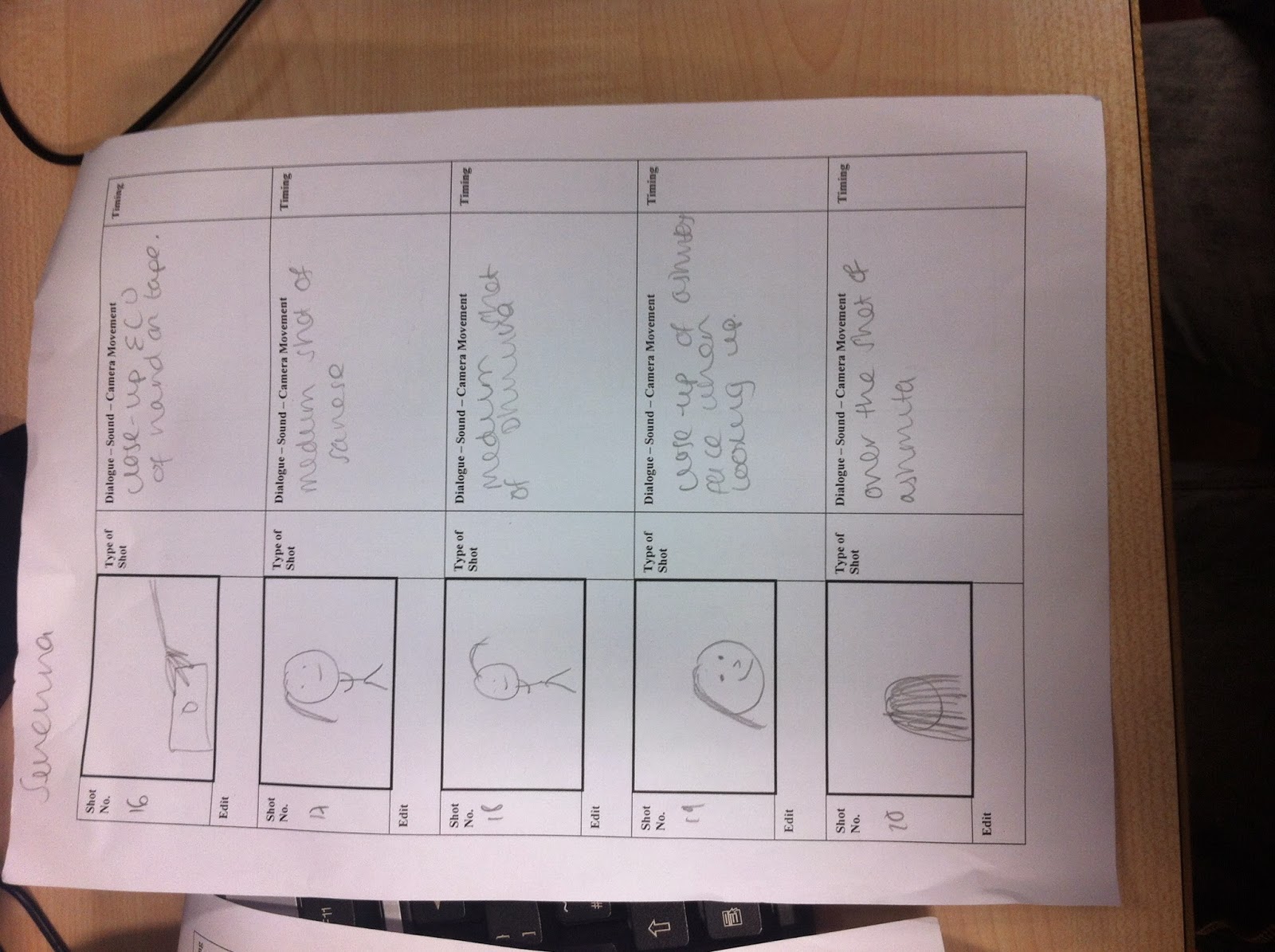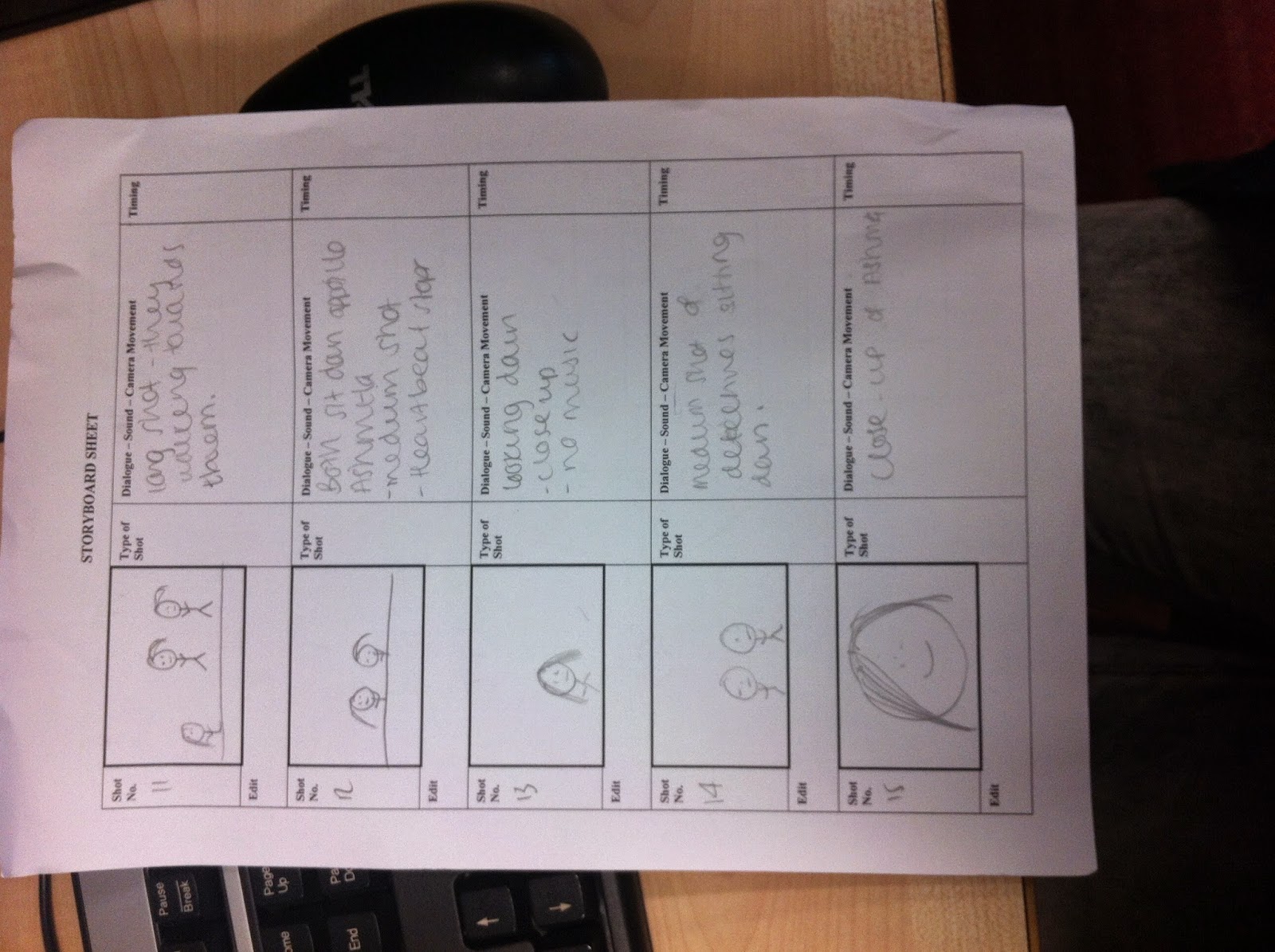Evaluation:
Our preliminary exercise involved filming and editing a character opening a door, crossing a room and sitting down in a chair opposite another character, with whom she/he then exchanges a couple of lines of dialogue. In terms of planning we came up with an idea of an interrogation. In order to start recording we had to plan the following:
- story board
- script
- camera shots
The following helped us as a group to help us create a trailer as it organised us, and we knew what to do as soon as we received the camera. The story board allowed us to plot the story in our head, and we were able to visualise it. The script helped in terms of knowing what to say and when to say it, we had to change our lines continuously as we had to make sure it was similar to our theme. The camera shots was mainly useful as we know exactly what camera angle to use for the different scenes by using the story board. If I was to do this again, I would make sure as a group we have more time to prepare to plan, and to work on the camera work. The strengths of this trailer was that the use of close ups was used effectively and shot precisely. the close ups in the film stood out the most, as it focused on one object, and was shot with stability and accurately. The weaknesses of this trailer was that apart from the close up shots, the other camera angles were not shot to its full standards, as it wasn't shot with a steady hand which made the film lose the tension and made it lose its focus. Another weakness was some of the shots were not focused well, which went wrong by not setting the camera to the right focus before shooting, and made the film again very messy and confusing. Overall the main weakness was the camera work for the longshots, and tracking shots.





